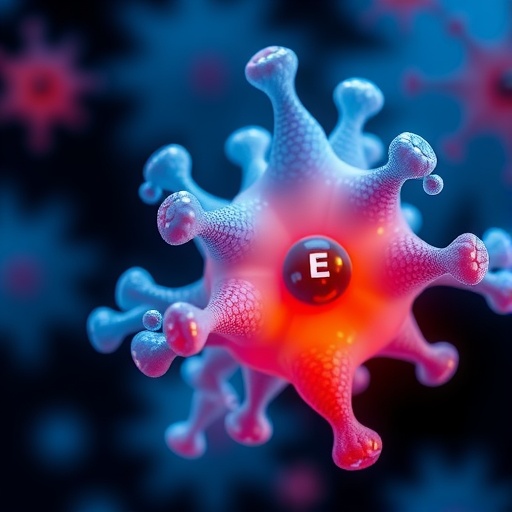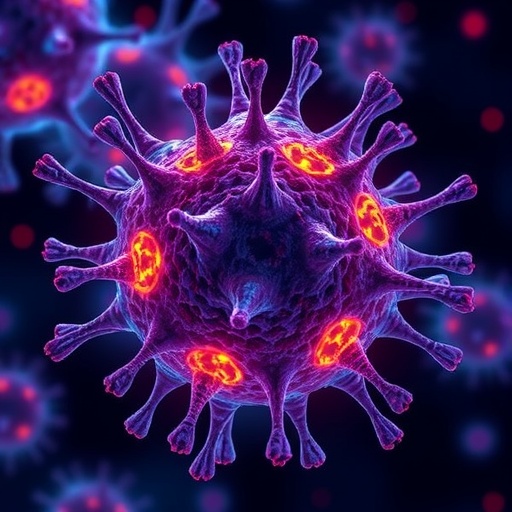CHAPEL HILL — The latest in a series of laboratory breakthroughs could lead to a more effective way to treat the most common brain cancer in children. Scientists from the University of North Carolina Lineberger Comprehensive Cancer Center and UNC Eshelman School of Pharmacy reported results from early studies that demonstrate how cancer-hunting stem cells, developed from skin cells, can track down and deliver a drug to destroy medulloblastoma cells hiding after surgery.
Previously, UNC Lineberger's Shawn Hingtgen, PhD, and his collaborators showed in preclinical studies they could flip skin cells into stem cells that hunt and deliver cancer-killing drugs to glioblastoma, the deadliest malignant brain tumor in adults. In their new study, published in PLOS ONE, the researchers reported they could shrink tumors in laboratory models of medulloblastoma, and extend life. The study is a necessary step toward developing clinical trials that would see if the approach works for children.
Hingtgen said this approach holds promise for reducing side effects and helping more children with medulloblastoma. More than 70 percent of patients with average-risk disease live five years on standard treatment, but not all patients respond, and treatment can cause lasting neurologic and developmental side effects.
"Children with medulloblastoma receive chemotherapy and radiation, which can be very toxic to the developing brain," said Hingtgen, who is an associate professor in the UNC Eshelman School of Pharmacy, an assistant professor in the UNC School of Medicine Department of Neurosurgery, and a member of UNC LIneberger. "If we could use this strategy to eliminate or reduce the amount of chemotherapy or radiation that patients receive, there could be quality-of-life benefits."
Hingtgen and his team showed the natural ability of the stem cells to home to tumors, and began studying them as a way to deliver drugs to tumors and limit toxicity to the rest of the body. Their technology is an extension of a discovery that won researchers a Nobel Prize in 2012, and showed they could transform skin cells into stem cells.
"The cells are like a FedEx truck that will get you to a particular location, and (deliver) potent cytotoxic agents directly into the tumor," Hingtgen said. "We essentially turn your skin into something that will crawl to find invasive and infiltrative tumors."
For the study, researchers reprogrammed skin cells into stem cells, and then genetically engineered them to manufacture a substance that becomes toxic to other cells when exposed to another drug, called a "pro-drug." Inserting the drug-carrying stem cells into the brain of laboratory models after surgery decreased the size of tumors by 15 times, and extended median survival in mice by 133 percent. Using human stem cells, they prolonged life of the mice by 123 percent.
They also developed a laboratory model of medulloblastoma to allow them to simulate the way standard care is currently delivered – surgery followed by drug therapy. Using this model, they discovered that after surgically removing a tumor, the cancer cells that remained grew faster.
"After you resect the tumor, we found it becomes really aggressive," Hingtgen said. "The cancer that remained grew faster after the tumor was resected."
Scott Elton, MD, FAANS, FAAP, chief of the UNC School of Medicine Division of Pediatric Neurosurgery and co-author on the study, said there is a need for new treatments for medulloblastomas that have come back, or recurred, as well as for treatments that are less toxic overall. The ability to use a patient's own cells to directly target the tumor would be "the holy grail" of therapy, according to Elton, and he believes it could hold promise for other rare, and sometimes fatal, brain cancer types that occur in children as well.
"Medulloblastoma is cancer that happens mostly in kids, and while current therapy has changed survival pretty dramatically, it can still be pretty toxic," Elton said. "This is a great avenue of exploration, particularly for the 30 percent of children who struggle or don't make it with standard therapy. We want to nudge the needle even further."
###
In addition to Elton and Hingtgen, other authors included Onyinyechukwu Okolie, David M. Irvin, Juli R. Bago, Kevin Sheets, Andrew Satterlee, Abigail G. Carey-Ewend, Vivien Lettry, Raluca Dumitru, Matthew G. Ewend, and C. Ryan Miller.
The study was supported by the UNC Eshelman Institute for Innovation, the UNC Translational and Clinical Science Institute TL1 Pre-doctoral Translational Research Fellowship, and the University Cancer Research Fund.
Media Contact
Laura Oleniacz
[email protected]
919-445-4219
http://cancer.med.unc.edu/
http://unclineberger.org/news/stem-cells-show-promise-as-drug-delivery-tool
Related Journal Article
http://dx.doi.org/10.1371/journal.pone.0198596




